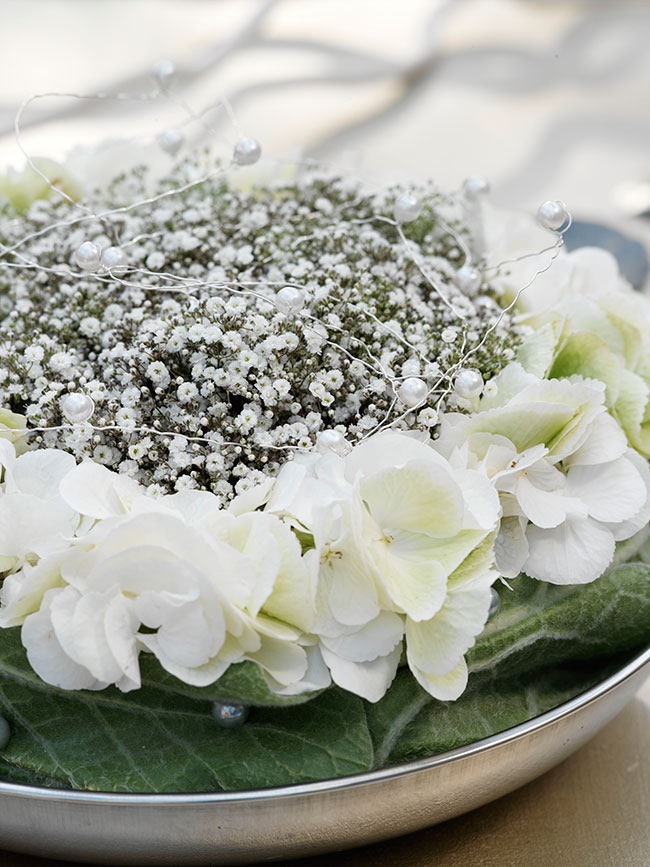
Features
Crops
Flowers
Growing Great Cut Gypsophila Crops
From small to large flower sizes, and in various growing conditions, today’s varieties excel.
May 15, 2015 By Chanochi Zaks
 “Million Stars”® is a commercial favourite.
“Million Stars”® is a commercial favourite. June 2015 – Gypsophila (also known as Baby’s Breath) is characterized by an abundance of flowers, most often white and petite. It blooms naturally in summer, when days are long. Gypsophila flowers are to be found among the 10 leading crops in the Dutch auctions’ sales. It is often used as a filler in the bouquet industry, but it can also be arranged in a vase alone without additional flowers.
Part of gypsophila’s enduring appeal comes from its vast variety. The incredible range of types and styles provide sought-after features that answer all tastes and needs. From small to large flower sizes, to different lengths and weights in stems, to selections for growers’ wide variety of soils and climates, today’s gypsophilas excel. High yields, extended shelf life and broad market appeal add to the long benefits list of this cut flower favourite.
Breeding has focused on incorporating characteristics such as resistance to over-saturated soil, vigorous re-growth after cut-back, high productivity, high disease resistance, low supplemental lighting requirements, enhanced performance in hot weather and more, making it easy for growers to select the best varieties to ensure success in their specific growing conditions and locations.
From the original tiny white blooms, a huge colour array now offers unending choices, from pure, brilliant white and ball-shaped to flexible stems on a wide canopy, to pure white, bright white and white touched with a hint of green or yellow, and even now in shades of pink.
Flower sizes range from five to 14 mm, none less impactful than the first. Profusions of flowers are possible year-round, ideal for innovative and attractive flower combinations.
REQUIRED STRATEGIES
Whether you are producing gypsophila in greenhouses, tunnels or open fields, a few standards hold true for quality gypsophila. Planting, establishment of plants, pinching, using supporting nets, application of excess lighting according to season and variety, and the regular irrigation and plant protection treatments should all be part of a successful strategy.
SOIL
Gypsophila thrive in all types of drained soils. Light soils are preferable, as are detached media such as volcanic ash.
RECOMMENDED TEMPERATURE
Provide temperatures of 15 C during night and 25 C during the day. Gypsophila are sensitive under 5 C.
LIGHTING
When daylight is less than 12 to 13 hours, depending on the environment’s temperature and light intensities, employ a lighting system of 100 lux.
HORMONES
Spray 150 ppm of the hormone gibberellic acid (GA), typically after the pruning stage and when growth is delayed.
IRRIGATION
Water thoroughly using two to three drip lines and an overhead system.
PLANTING DENSITY
Planting density depends on the variety, but in general, six to eight plants per square metre net, or alternatively 40,000 to 50,000 plants per hectare equals 10,000 square metres gross. Bed width should be one metre wide, and the paths between beds should be a 0.50 metre.
EXPECTED YIELD
Much like planting density, yield depends on the variety and the number of flushes. Typically you can expect an average of approximately 35,000 to 50,000 branches per flush/dunam or 350,000 to 500,000 branches per flush/hectare. Commercial flowering flushes per year will be two to 2.5, meaning a total of 70,000 to 100,000 flowers per dunam/year or 700,000 to 1,000,000 flowers per hectare/year.
FLOWERING FLUSH DURATION
Gypsophila typically flower about three months after planting or pruning, depending on the variety and the geographical and physical location of the crop.
AFTER SECOND FLUSH
After the second flush, prune plants, usually two to three cm above ground level. Apply one to two gibberellic acid (GA) hormone sprays. Use supporting nets (two nets and a number of lengthwise cords). Finally, provide the regular irrigation and spray treatments according to requirements.
DISEASE AND PESTS
Depending on the variety, diseases including alternaria, rhizoctonia, pythium and powdery mildew may be a consideration. Watch for insects such as leaf miners, mites, aphids, caterpillars and thrips.
Maintain moderate humidity levels and provide good air circulation as part of a good preventive program. Preventing insect or disease activity starts with vigilant scouting and monitoring.
HARVESTED FLOWER TREATMENT
Quickly place the harvested flowers in solution or water. The solution should consist of: STS (silver thiosulfate) – 0.15 per cent + T.O.G.3 – 0.15 per cent + sugar – five per cent in the summer, and seven per cent in the winter (or alternatively Vitax 21 – 0.15 per cent corresponding to STS, Vitax 33 – 0.15 per cent corresponding to T.O.G3 + sugar five to seven per cent depending on the season, or another option, using Forever Gypsophila – 0.5 per cent + sugar).
Note that these are general guidelines. You will need to make necessary adjustments when growing in different climatic conditions and different agricultural practices.
Chanochi Zaks is vice-president of marketing for Danziger “Dan” Flower Farm, breeder of Gypsophila varieties including XLence™, Million Stars®, Dynamic Love™ and others. He can be reached at chanochi@danziger.co.il.
Print this page

